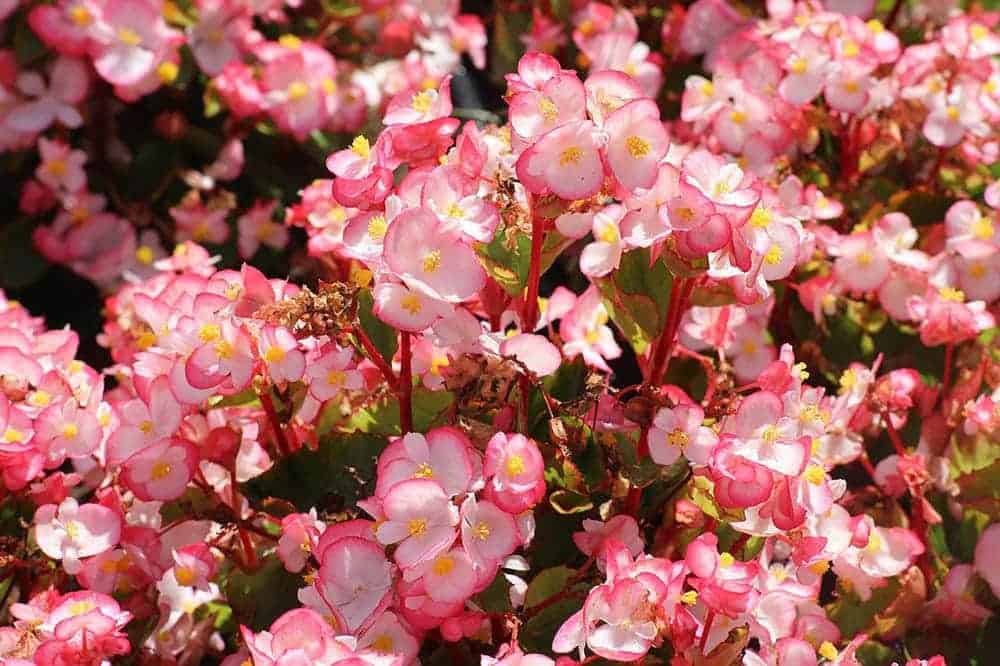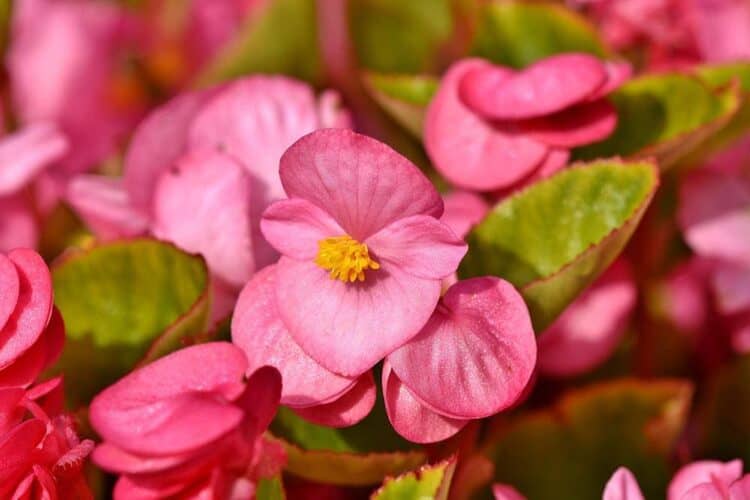Gardening can be a healthy way for you and your dog to enjoy common time in your backyard together. Except for the occasional digging, flowers and Fido can usually share the same yard without any worries. But did you know that some popular plants are actually quite toxic to dogs? Begonias are poisonous to pups and can cause vomiting and difficulty swallowing. If your dog eats any of this plant, contact your veterinarian or the Pet Poison Hotline immediately to see what to do next.
Why Are Begonias Poisonous to Dogs?
Begonias are bad news for most domesticated animals. They’re poisonous to dogs and cats, but horses and other grazing animals have the most extreme reactions in lower amounts, including kidney failure. The most toxic part of the plant is underground, but any part might cause digestive issues and mouth irritation. Soluble calcium oxalates are the substance that make this plant poisonous. They essentially lower electrolyte function and can be fatal in high amounts.
What to Do If Your Dog Eats a Toxic Plant?
If you think your dog has eaten a begonia or another toxic plant, there’s no time to waste. Note how much they ate, collect a sample from the plant in question, and rinse out your dog’s mouth. Immediately call your vet or the Pet Poison Hotline at (855) 764-7661. If the phone call determines the need for urgent medical care, keep a close eye on your pet until you get there.

The 5 Other Common Plants That Are Toxic to Dogs
Though cats and dogs have different nutritional needs, they’re largely intolerant of the same plants. The Amaryllidaceae family consists of bulbed flowers such as the Amaryllis and various types of lilies, as well as allium plants including garlic, chives, and shallots. All of these types of plants are toxic to both cats and dogs. Some other popular plants with shared toxicity include:
- Rhododendrons (including Azaleas). Though the flowers are pretty in the spring, it’s best to not include these shrubs in your garden. Rhododendrons affect the cardiac and skeletal muscles in dogs and cats. Symptoms of poisoning can affect the GI, cardiovascular, and nervous systems of your pet. Though the effects can be widespread and severe, the prognosis is typically fair if the poisoning is treated early.
- Hyacinth. The hyacinth is a perennial bulb that usually features purple flowers and is part of the Asparagus family. Unlike the vegetable however, which is safe for pets to eat, hyacinth is toxic to dogs and cats. Symptoms of poisoning include violent vomiting, diarrhea, depression and tremors.
- Mistletoe. All parts of this popular yuletide plant are poisonous to cats and dogs, but the berries are the worst. If your dog eats mistletoe, watch for diarrhea, vomiting, low blood pressure (rare), difficulty breathing, and low heart rate.
- Geranium. These plants are popular in container gardens and window boxes. They come in a variety of colors and make a big, bold statement, but all parts of this plant are toxic to your pets. If your dog swallows any part of the geranium, look out for lethargy, low blood pressure, skin rashes, and loss of appetite.
- Foxglove. These tall flowering plants are typically purple with spots on the inside. Foxglove is extremely dangerous for your pets—and for you—if ingested. All parts of this plant are toxic and can cause cardiac failure. If your pet has swallowed foxglove, rush them to the vet’s office because this plant has the potential to be life-threatening even in relatively small amounts.
For a more extensive list, visit the American Kennel Club or the ASPCA.
Final Thoughts
While they might be a popular choice because they’re pretty and easy to grow, begonias are one of the many flowering plants that don’t belong in a garden frequented by your dog. If you’re wondering what’s safe to grow, visit the website for the ASPCA for a list of toxic and non-toxic plants. If you suspect your dog has ingested a toxic plant, call your vet or the Pet Poison Hotline immediately.
Featured Image Credit: Pixabay
















